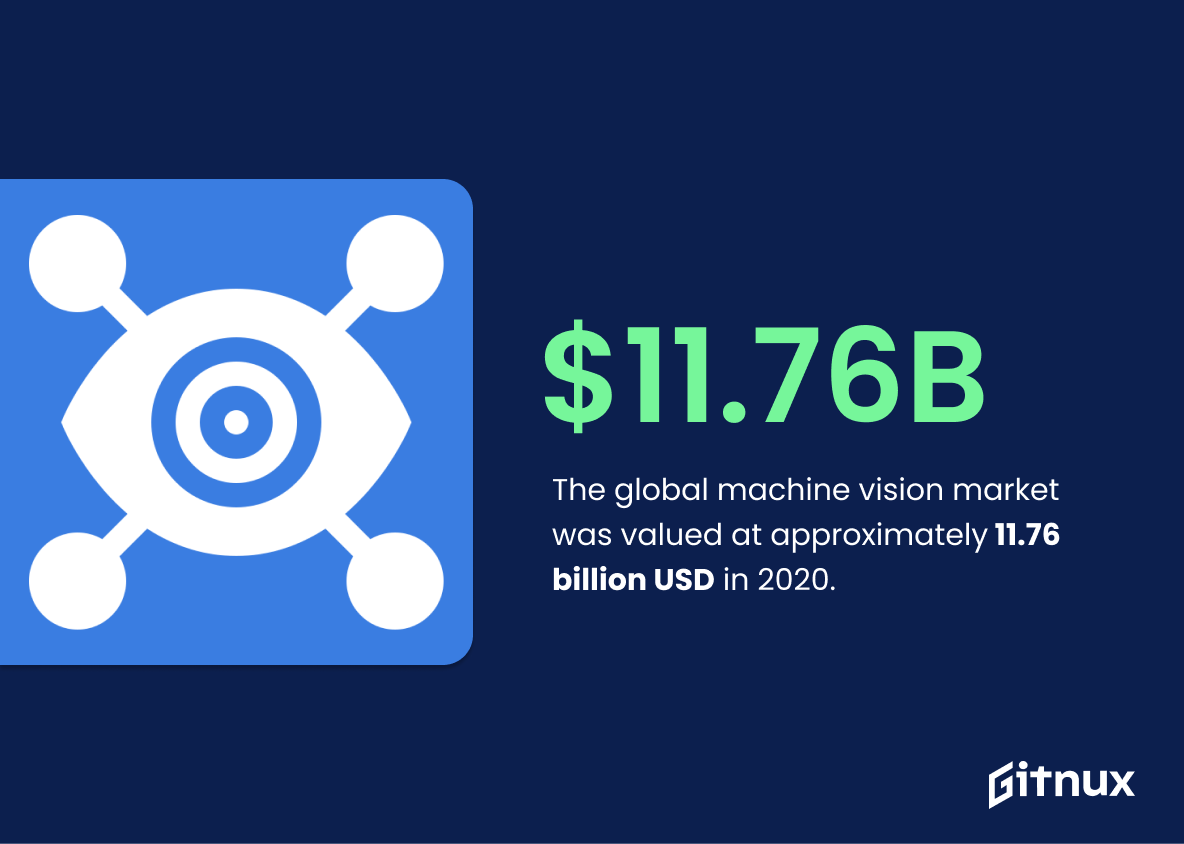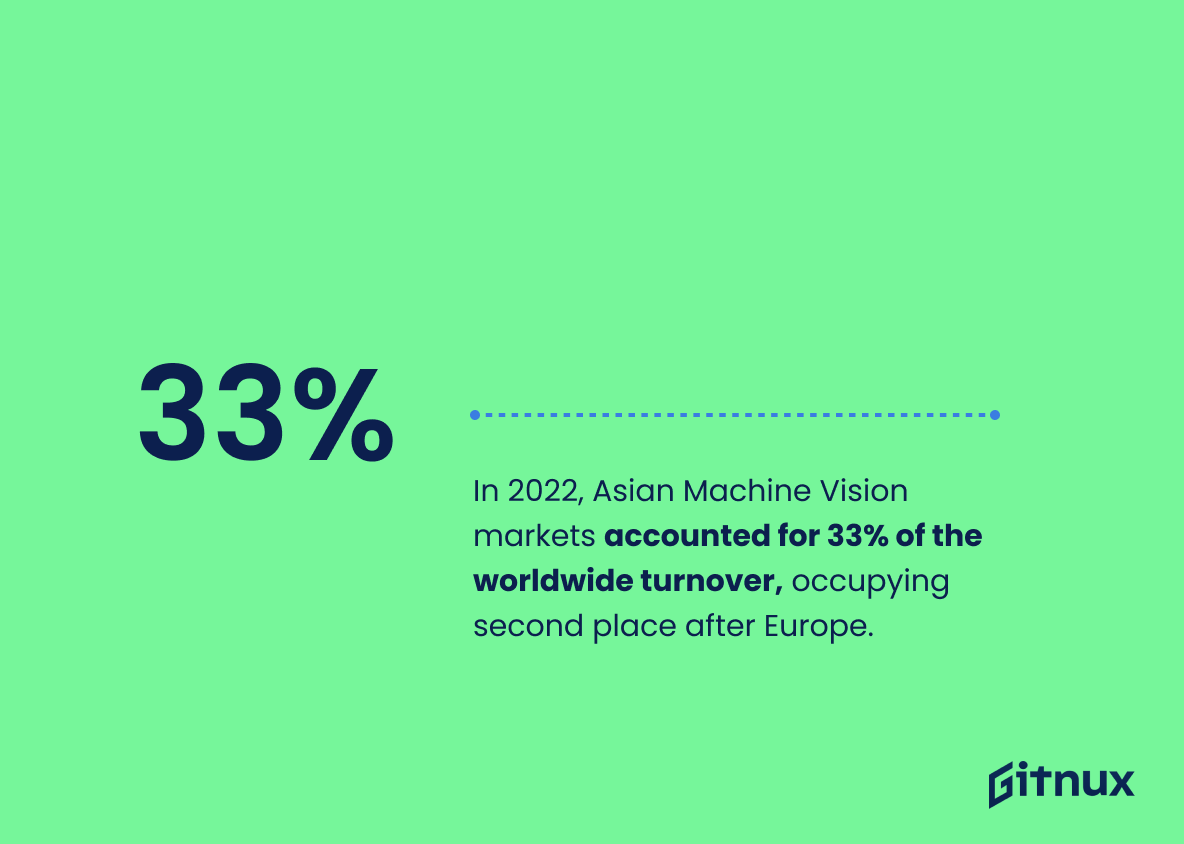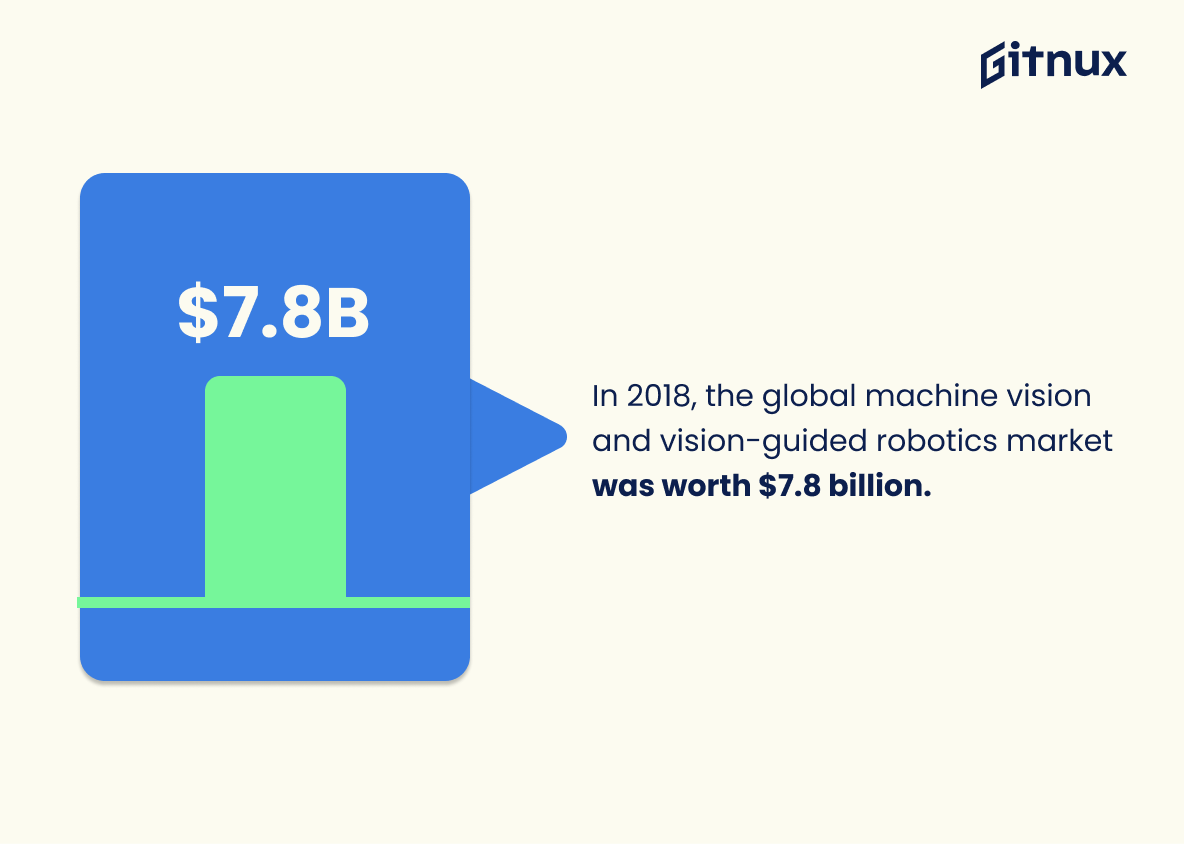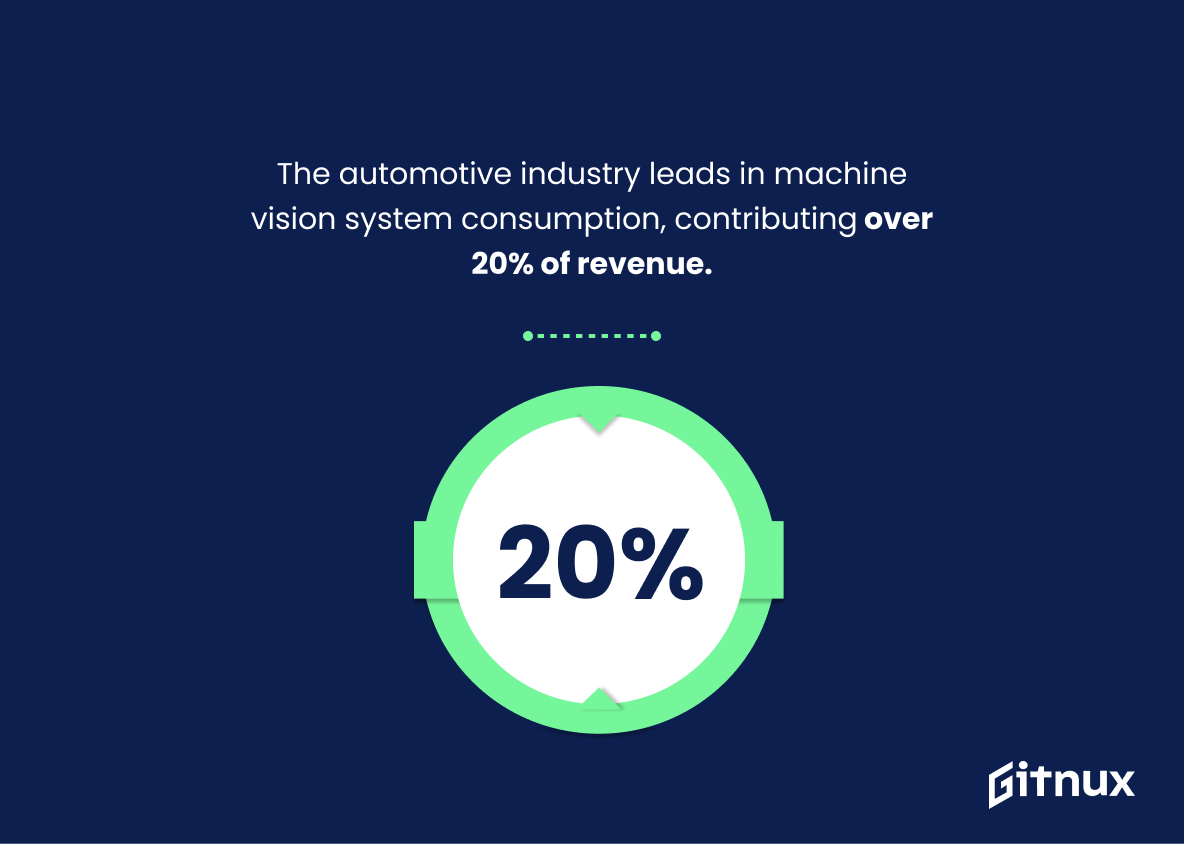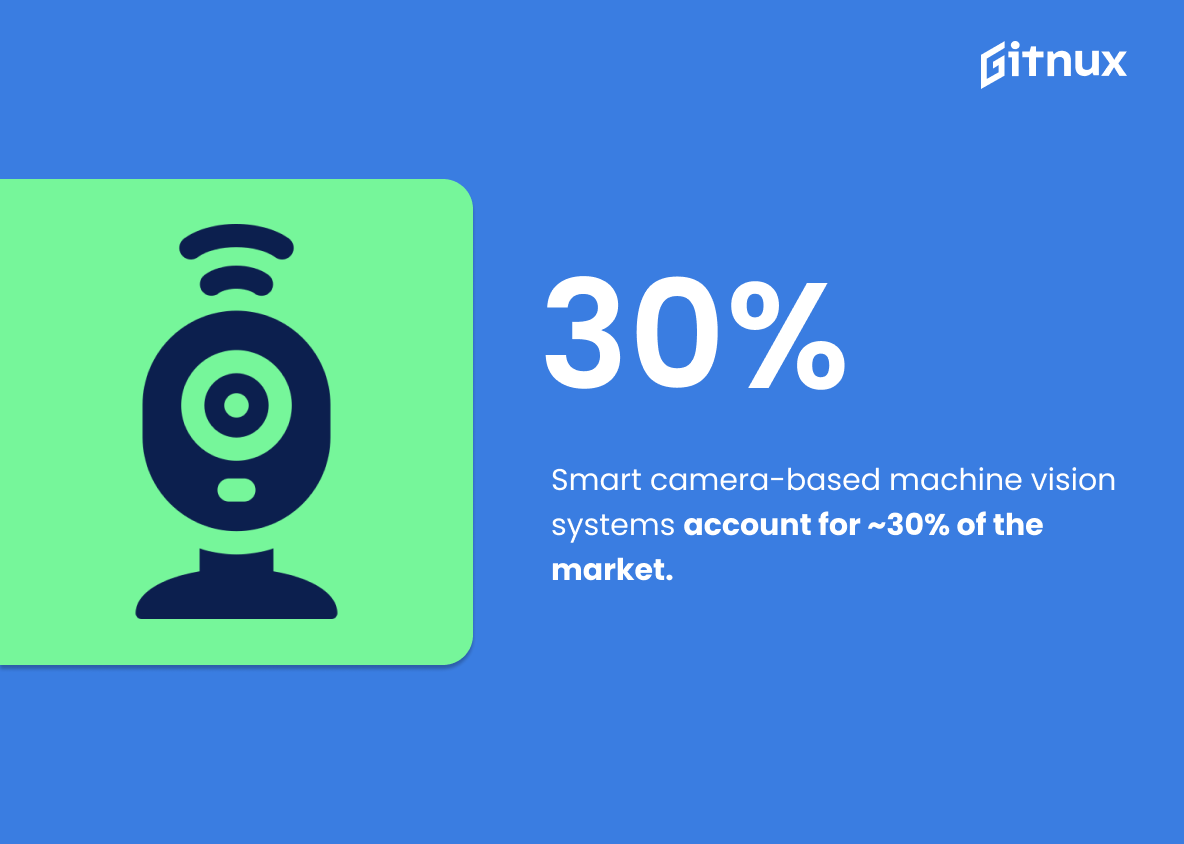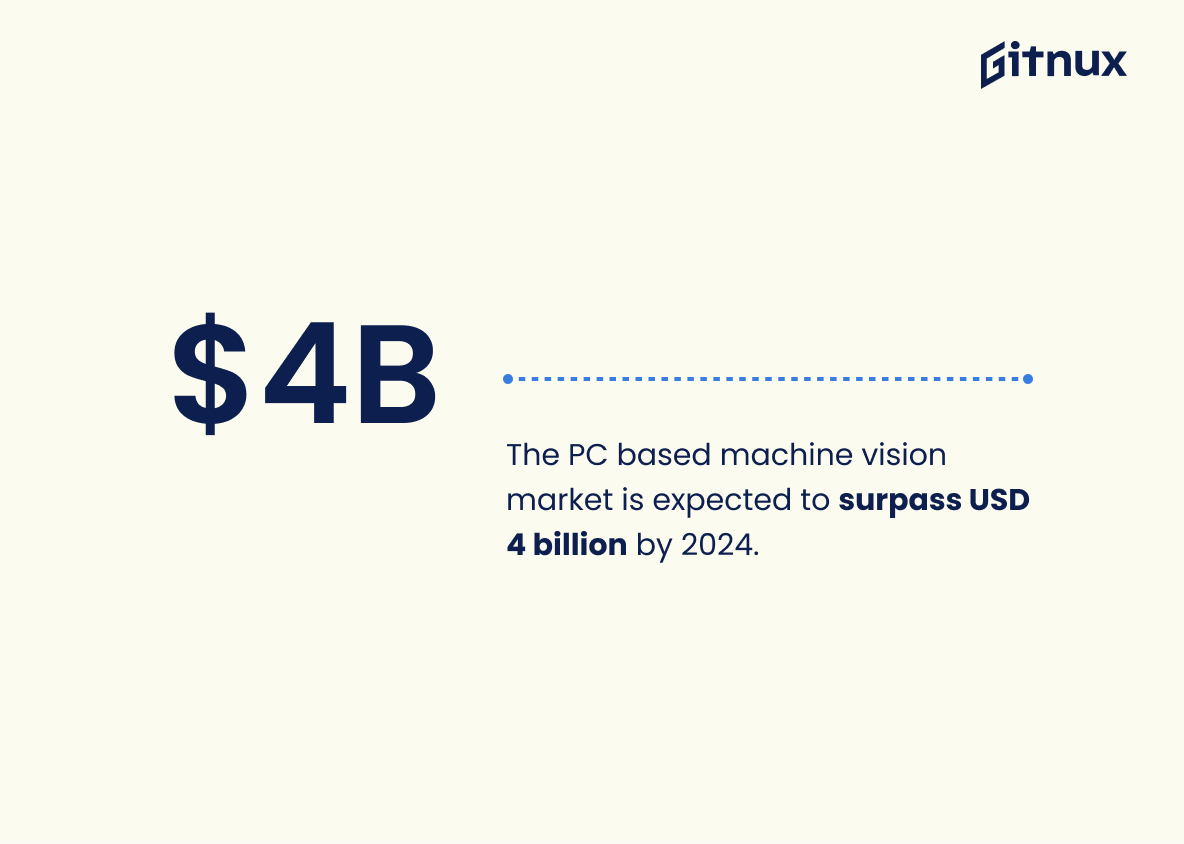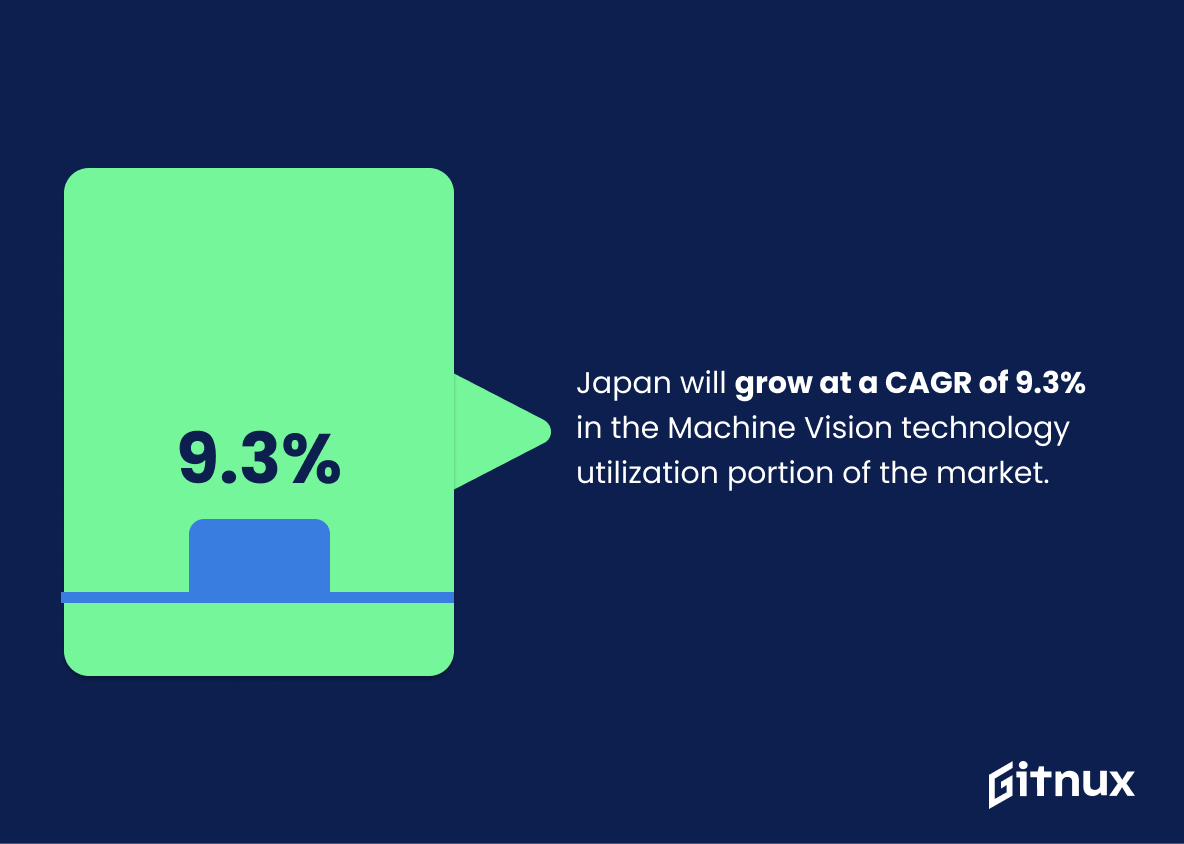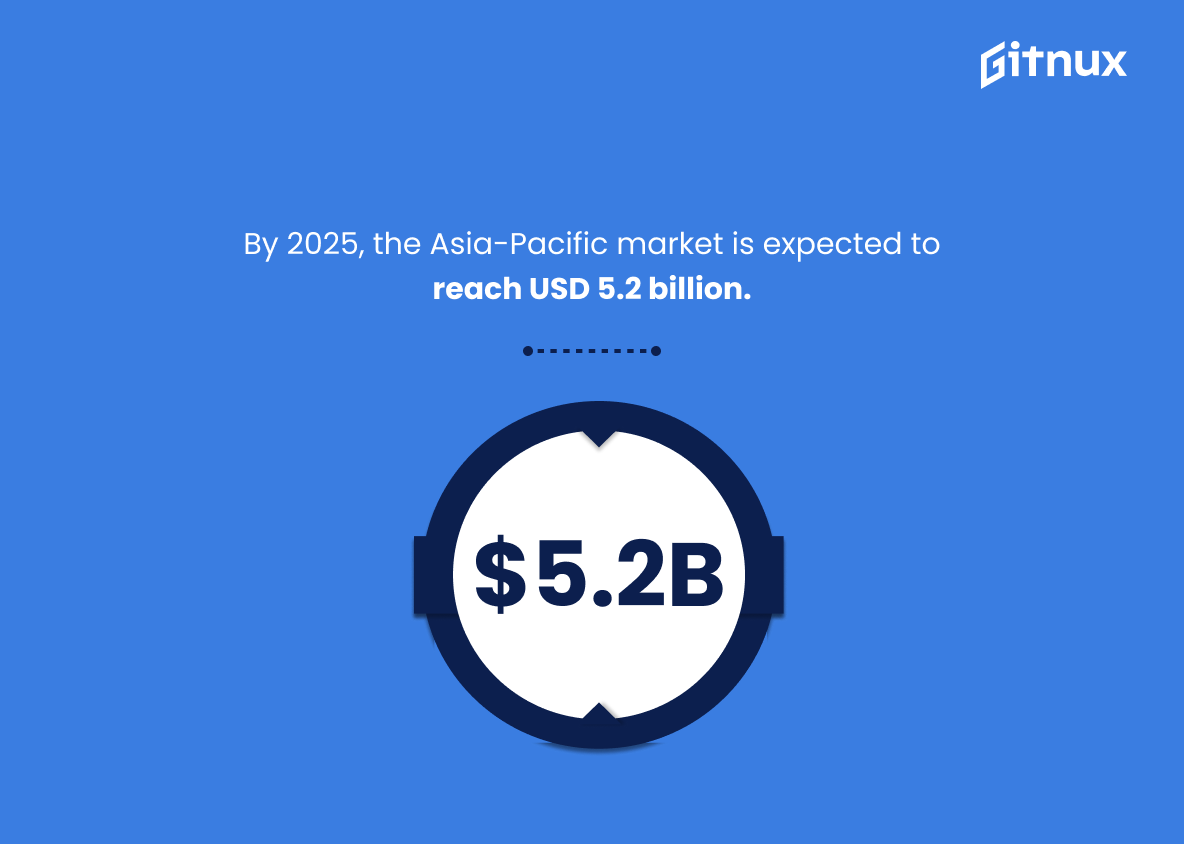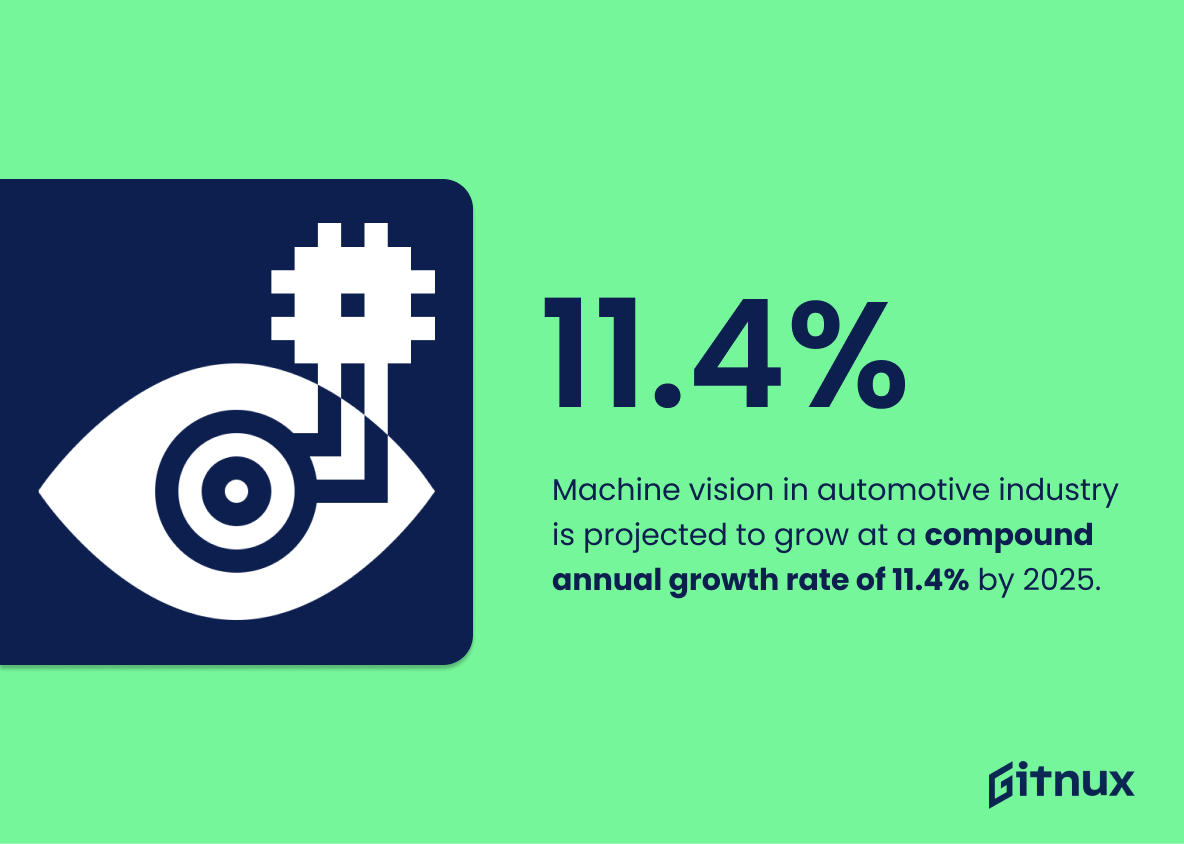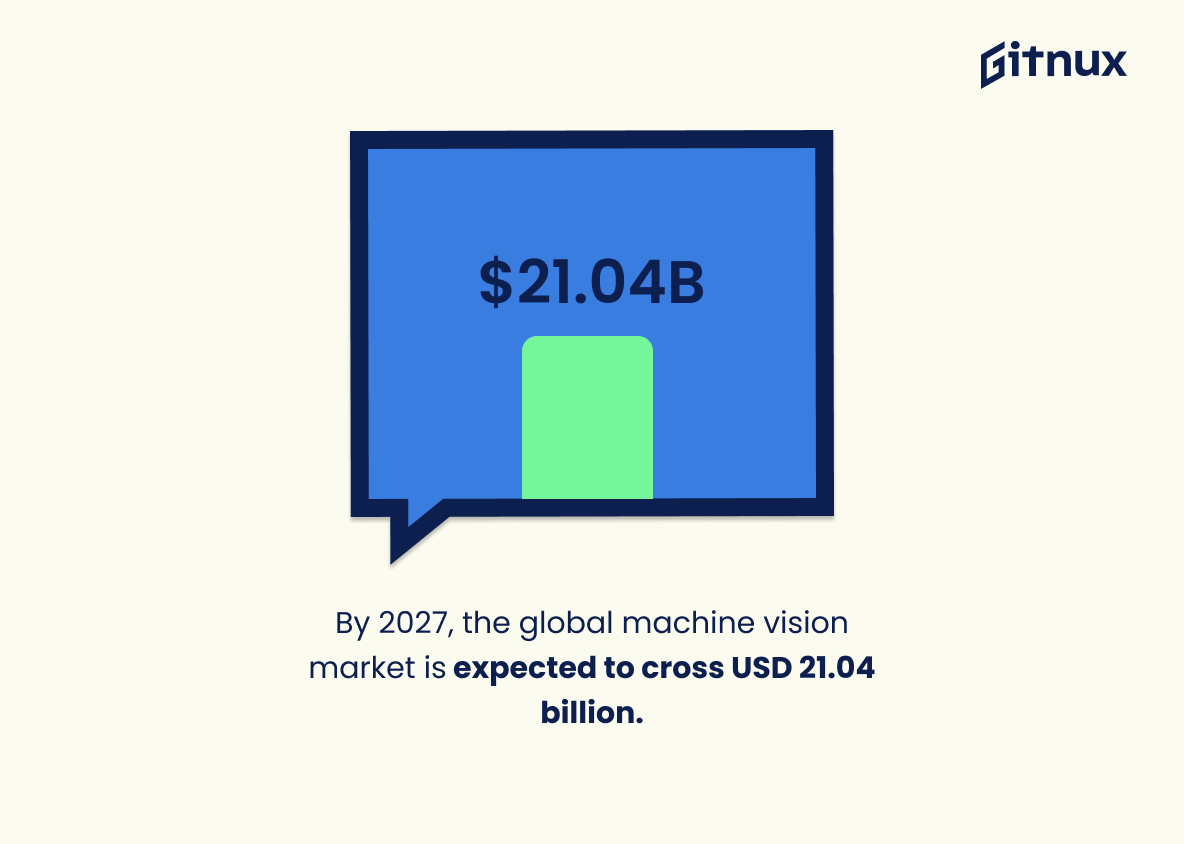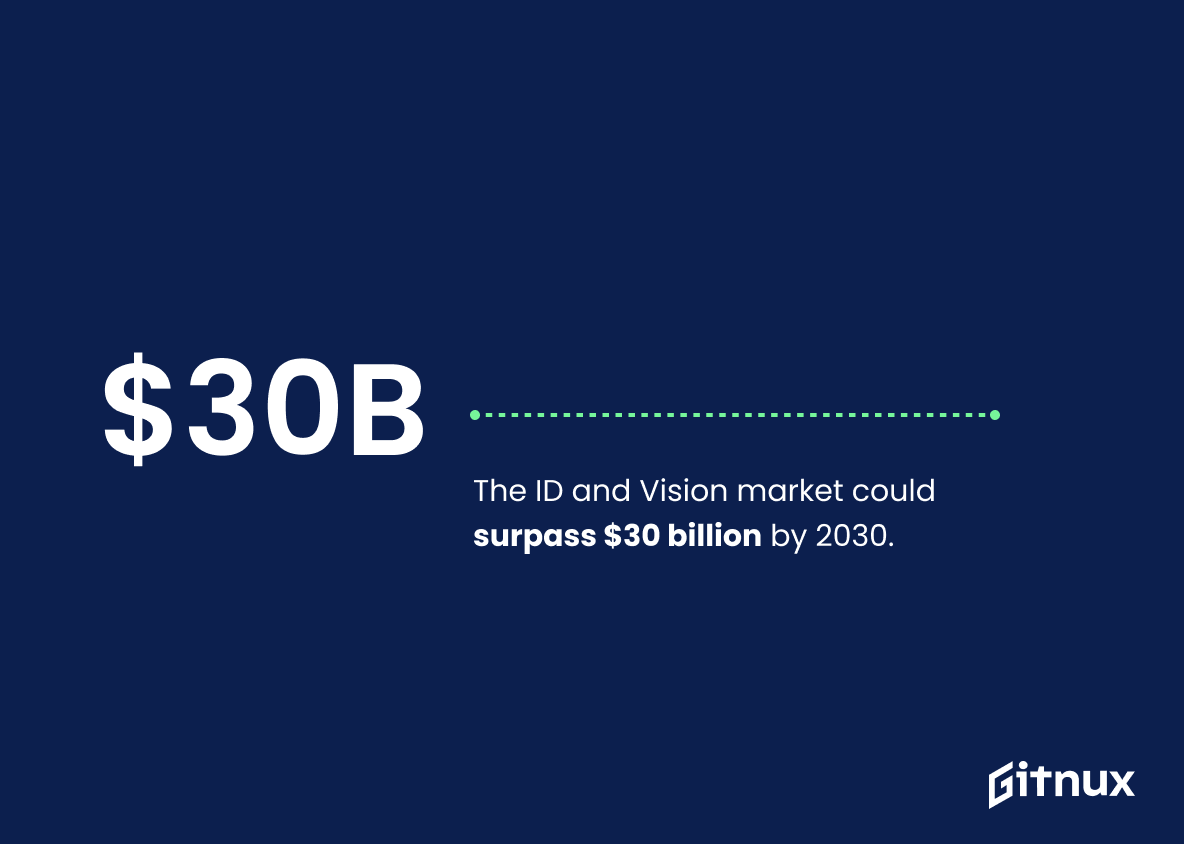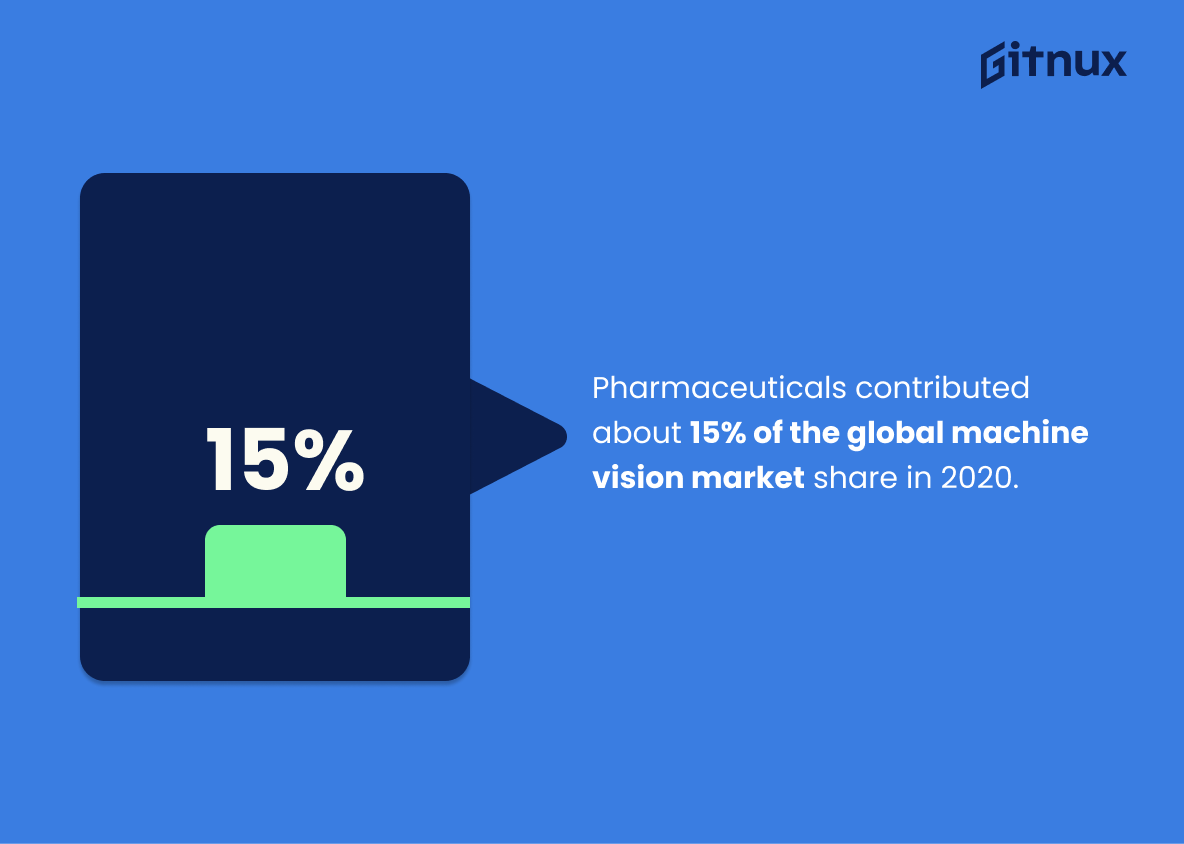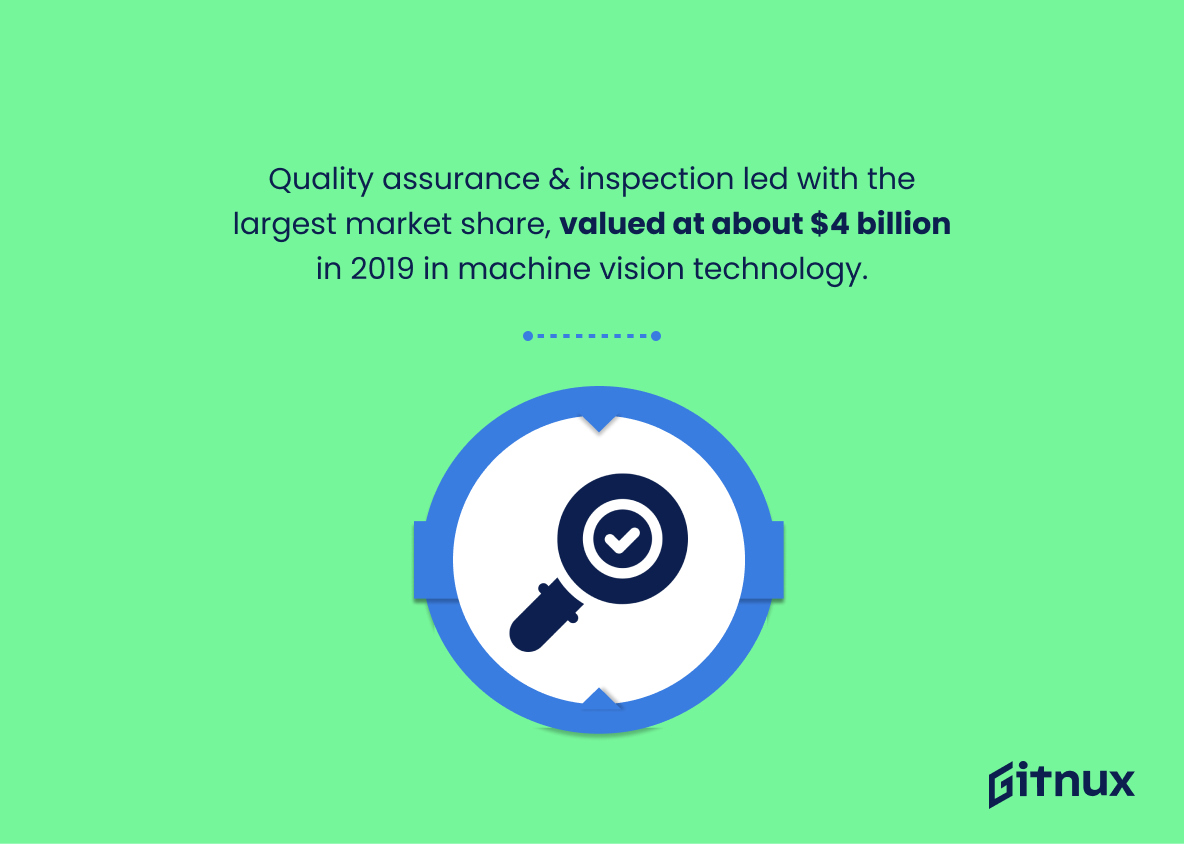Embarking on a journey through the dynamic world of the Machine Vision industry, a realm full of in-depth insights and intriguing statistics, is truly fascinating. Fueled by rapid advancements in technology and an ever-growing demand for automation, the global Machine Vision industry is undergoing considerable transformation. As a key driver of the robotic revolution, Machine Vision is continuously shaping various sectors, from automotive to healthcare, agriculture to manufacturing.
Today, we delve deeper into an array of crucial Machine Vision industry statistics, painting a comprehensive picture of its current landscape, predicted trends, growth opportunities, and the challenges it encounters. Buckle up for an intriguing exploration of numbers and facts, intricately woven into the fabric of the ground-breaking Machine Vision industry.
The Latest Machine Vision Industry Statistics Unveiled
The global machine vision market was valued at approximately 11.76 billion USD in 2020.
Peeking beneath the surface of the 2020 valuation of the global machine vision market, which stood staggeringly around 11.76 billion USD, offers generous insight into the relevance and growing prominence of this industry. This monetary marker serves as a testament to the heightened international demand for machine vision technology, affirming its rapid march from a progressive idea to an influential player in the tech sector.
Moreover, to affix a dollar value to this global market is more than a mere financial quantification; it is a reflection of the extent to which industries worldwide are incorporating machine vision into their operational processes. As such, it’s an essential piece to the larger puzzle of understanding the scope, trajectory, and potential of the Machine Vision Industry, painting a vivid picture of its significance in our increasingly automated world.
The Machine Vision Market is expected to reach USD 15.5 billion by 2026, at a CAGR of 7.0%.
An impressive leap in the Machine Vision Market is in the horizon. Projected to soar to a skyscraping USD 15.5 billion by 2026, this growth is expected to steadily climb at a Compound Annual Growth Rate (CAGR) of 7.0%. This remarkable economic trajectory paints a bright future not just for machine vision vendors, but also for various industries including automotive, pharmaceutical, packaging, and electronics that extensively use machine vision solutions.
It’s a testament to the increasing reliance on these innovative solutions to drive efficiency, increase accuracy, and ensure quality control. As we race forward into the era of technological advancements, understanding this spectacular growth trend is like having a road map that guides us in our journey through the complex terrain of the Machine Vision industry.
In 2022, Asian Machine Vision markets accounted for 33% of the worldwide turnover, occupying second place after Europe.
Peeling back the veneer of numerals, the statistic underlines a transformational shift in the global economic landscape. Focusing the spotlight on Asia, the figures reveal its emerging influence, capturing a significant 33% of the global Machine Vision turnover in 2022. Emerging as a strong competitor, Asia now holds the position of second place gunning close on the heels of Europe. This showcases how Asian economies are increasingly becoming technology-intensive, illuminating new growth trajectories in the Machine Vision industry.
This ascendency underscores Asia’s increasing technological absorption capacity and its burgeoning role in shaping the future of the Machine Vision industry. Fostering understanding of this data gives us the pulse of economic progression, and hones our understanding of the global Machine Vision industry; a subject that lies at the heart of our blog post.
In 2018, the global machine vision and vision-guided robotics market was worth $7.8 billion.
In the majestic symphony of the Machine Vision Industry, the statistic that the global machine vision and vision-guided robotics market held a value of $7.8 billion in 2018 serves as a powerful keynote. This figure paints a picture of economic vibrancy and staggering growth potential. It provides an illustration of the industry’s foothold in the global market, setting the stage for understanding the depth and breadth of its influence.
Moreover, it brings into light the significant role of the players in this rapidly-advancing sector, illuminating the immense opportunities and challenges in shaping the industry’s future. Such a statistic, hence, acts as a compass, guiding those interested in the industry, investors, or innovators, through the thicket of information and setting a clear path towards understanding the market dynamics.
The automotive industry is the leading consumer of machine vision systems, contributing to over 20% of the revenue.
The fascinating world of machine vision systems finds its most prominent patron in the automotive industry, which singlehandedly fuels over a fifth of the sector’s revenue stream. This paints a vivid picture of the robust dependency between AI-powered automation and the motor industry. Moreover, it underscores the escalating demand for quality control, precision assembly, and automation in the vehicular manufacturing sector which potentially propels the machine vision market forward.
In the intricate dance of industry statistics, this symbiotic relationship serves as a testament to the ascendency and relevance of machine vision systems not just in its own industry, but also in shaping the future of automotive production.
Smart camera-based machine vision systems account for ~30% of the market
Delving into the world of Machine Vision Industry Statistics, an intriguing observation is that nearly one-third of the market is dominated by smart camera-based machine vision systems. This piece of data is akin to finding a key puzzle piece in understanding the infrastructure and dynamics of this rapidly evolving industry.
The ascendency of smart camera-based systems is indicative of the shift toward intelligent, autonomous technologies. The approximately 30% market share also suggests a high level of investment and trust in these systems, reflecting their efficacy, reliability, and potential for growth. Furthermore, it underscores the market’s readiness to transition from traditional systems to smart, AI-powered technologies, thereby reshaping the trajectory of the industry. Therefore, as we map the future landscape of the machine vision sector, this observation serves as a vital vantage point, highlighting critical trends, opportunities, and challenges ahead.
The industrial sector is predicted to grow at a CAGR of 11% from 2020 to 2026 in the machine vision market.
Delving into this compelling piece of data, we can glean vitally important insights projecting the future dynamics of the machine vision market space. It is accentuating a forecasted Compound Annual Growth Rate (CAGR) of 11% in the industrial sector, indicating a paradigm shift between 2020 to 2026.
What this conveys is the burgeoning potential and imminent growth of machine vision within the industrial realm, a seismic trend sure to reshape the industry’s landscape in the coming years. This presages significant opportunity for businesses, technologists, and investors within this space to capitalize on. It’s like unlocking a treasure map, offering clues to future hotspots of innovation, investment, and potential market dominance in the machine vision sector.
Moreover, this piece of insight highlights the rapidly advancing role of automation and smart technologies in the industry, thus, underscoring the necessity for businesses to stay competitive by integrating machine vision solutions. In a sense, this horizon-expanding statistic serves as a bellwether for the industry’s future, its importance to our economy, and its potential impact on global industrial operations.
Hence, any narrative or discussion about the Machine Vision Industry Statistics would be incomplete without acknowledging this potent indicator of growth and opportunities lying ahead.
The PC based machine vision market is expected to surpass USD 4 billion by 2024.
Unraveling the future evolution of the Machine Vision Industry, the staggering prediction of PC-based machine vision market surging beyond USD 4 billion by 2024 illuminates a powerful trajectory of expansive growth. This dazzling valuation is not just a mere number, rather it powerfully underlines the escalating demand and burgeoning advancement within the machine vision sphere.
Envisioned within this statistic is a testament of Industry’s accelerating push towards harnessing PC-based solutions for intricate imaging tasks. Mainly, it serves as a barometer of technological progress, spotlighting businesses’ increasing reliance on this cutting-edge facility. It also serves as a pulse-check for tech-savvy investors, pointing towards profitable tech avenues and burgeoning marketplaces of tomorrow.
Hence, the blog post about Machine Vision Industry Statistics, using this prognostic number, can adeptly guide readers to understand the magnitude of the economic opportunity PC based machine vision represents, and stakes that lie ahead in the booming arena of machine vision technology.
Japan will grow at a CAGR of 9.3% in the Machine Vision technology utilization portion of the market.
The illumination of the statistic – Japan experiencing a Compound Annual Growth Rate (CAGR) of 9.3% in the Machine Vision technology utilization – brings forward a crucial pivot point in the narrative of Machine Vision Industry statistics. This growth velocity not only underlines Japan’s progressive stance towards adopting advanced technological platforms but also offsets a forecasted uptrend in the global market share.
Such a significant acceleration in the usage of Machine Vision technology highlights Japan’s potential to become a pioneering force in this cutting-edge sector. As we navigate deeper through the digitally driven epoch, this particular statistic serves as a lighthouse, guiding the direction of future industry strategies and global market predictions.
By 2025, the Asia-Pacific market is expected to reach USD 5.2 billion.
Forecasting an impressive USD 5.2 billion valuation for the Asia-Pacific market by 2025 forms the epicenter of optimism for stakeholders in the Machine Vision Industry. This projected statistical trajectory paints a vibrant picture of expanding opportunities in the region, adding significant weight to its global presence.
It showcases how rapidly the industry could develop due to favorable market trends and technological advancements in the region, setting the stage for potential revolutionary strides in fields like automation, quality inspection, industrial process control, and beyond.
Machine vision in automotive industry is projected to grow at a compound annual growth rate of 11.4% by 2025.
Delving into the world of machine vision industry statistics, one cannot ignore the projection of a robust 11.4% compound annual growth rate in the automotive sector by 2025. This focal point not only marks a promising trend for technological advancements but also highlights the increasing reliance of the automotive industry on machine vision systems.
This multifaceted growth forecast has the potential to inspire confidence in investors, mechanists, and technology enthusiasts alike, speaking volumes about the transformative power of machine vision in upgrading automotive operations and safety measures. It paints a narrative of the industry’s vibrancy and its capability to drive future market trends, thus weaving an essential thread into the larger tapestry of machine vision statistics.
By 2027, the global machine vision market is expected to cross USD 21.04 billion.
Delving into the intrigue of the Machine Vision Industry’s future, one of the pivotal figures to consider is its projected market value of over USD 21.04 billion by 2027. This astronomical sum paints a vivid picture of the rapid strides this sector is making, and the substantial economic impact it holds.
The scale of this growth spotlights not just the rising demand and acceptance of machine vision technology across various industries, but also the leaps we can expect in tech advancements and their exciting applications. Keeping an eye trained on this value gives us a crucial yardstick to measure this industry’s progress and better understand its trajectory.
The ID and Vision market could surpass $30 billion by 2030.
Forecasting a growth spurt to a whopping $30 billion by 2030, the ID and Vision market is a goliath slowly lifting the mists of obscurity. In a world fixated on data-driven decisions, this prediction isn’t just a number – it’s a beacon signaling ample opportunities for stakeholders in the Machine Vision Industry. This vigorous financial projection is a testament to technological advancements, machine vision applications, and market relevance.
The statistic provokes thought into potential growth areas like automation, robotics, and quality control, underscoring Machine Vision’s essentiate role in future-tech narratives. This underlines the importance for market players to be part of this rapid ascension, shaping their strategies to navigate this lucrative expansion.
The pharmaceutical industry approximately contributed up to 15 percent of market share in the global machine vision market in 2020.
Illuminating the fact that the pharmaceutical industry accounted for around 15 percent of market share in the global machine vision market in 2020 serves to underline the vital role that this sector plays within the wider context. It’s a testament to the burgeoning symbiosis between technological innovation and pharmaceuticals, largely driven by automation, quality control, and production efficiency.
Further, this statistic adds depth to our understanding of the market dynamics, signaling the pharmaceutical industry’s demand for machine vision technologies which could be an engine for growth and innovation moving forward. Taken together, these patterns advise stakeholders about potential investment prospects and development pathways in the machine vision arena, conditional of course on the strategic importance placed by the pharmaceutical industry.
The quality assurance & inspection segment of machine vision technology contributed to the largest market share and was valued at around USD 4 billion in 2019.
Highlighting the immense contribution of the quality assurance & inspection segment worth around USD 4 billion in 2019, underlines the significant role this domain plays within the machine vision technology industry. This fact is not just intriguing, but also underpins the trending importance and reliance of industries on this technology for quality checks and inspections.
Such a powerful statistic certainly makes the quality assurance & inspection segment the reigning king by capturing the largest market share. At the same time, it offers a forecasted trend, possibly encouraging market players to further invest and innovate in this segment. In essence, it drives home the potential that the sphere of machine vision technology is brimming with when seen through the lens of quality assurance and inspection.
Industrial applications segment is expected to grow at a CAGR of 10.2% during 2019 to 2025.
Diving into the depths of this statistic reveals an upcoming boom in the Machine Vision Industry. Imagine Industrial Applications as a rapidly rising star poised for a 10.2% Compound Annual Growth Rate (CAGR) from 2019 to 2025. This not only indicates that this sector is a significant driving force behind the expansion of the Machine Vision Industry, but it also shows the sector’s vast potential for innovation and value creation. This growth trajectory signals optimal opportunities for investment, underscores evolving industry trends, and hints at the transformation in store for the future of the industrial landscape.
By 2025, China is expected to account for approximately 37.63% of the total Asia Pacific machine vision market.
Highlighting the expected dominance of China in the Asia Pacific machine vision market not only underscores the rapidly accelerating growth and innovation within the Chinese tech industry, but it also presents a pivotal element shaping the future dynamics of the machine vision industry. The anticipation of such market concentration in China suggests an emerging nucleus of technological advancement and market demand within the Asia Pacific region.
This signifies abundant investment opportunities and challenges for foreign businesses, and points out the importance for further research on market strategies and regulatory environment in China. The industry influencers, market movers and decision-makers can utilize this information to paint a realistic picture of the future, guiding their strategic planning and directing their innovations to align with this anticipated market trend.
Vision guided robotics is expected to grow at a healthy CAGR of 15.3% from 2020 to 2027.
Spotlighting the projected CAGR of 15.3% for vision guided robotics from 2020 to 2027 serves as a powerhouse indicator of the escalating dynamism within the machine vision industry. This sharp ascension rate not only underscores the accelerating pace at which this technology is being embraced and advanced, but, it also accentuates the potential lucrativeness of investment opportunities. Consequently, it affirms the drive for innovation and development this industry is currently undergoing, an element vital for any stakeholders mapping out their long-term strategies.
The machine vision camera market is forecasted to be worth USD 2.5 billion by 2023.
Gazing at the future through the predictive lens of statistical forecasting, the revelation of the machine vision camera market ascending to a staggering worth of USD 2.5 billion by 2023 serves as a powerful testament to the imminent growth this sector. This figure not only underscores the accelerating demand and adoption of machine vision technology across diverse industries, but it also captures the dynamic evolution and potential profitability within this innovative domain.
By weaving this statistic into a narrative on Machine Vision Industry Statistics, we essentially illuminate the picture of the industry’s future, assisting stakeholders in making informed decisions and strategizing proactively.
Conclusion
As we take stock of the current machine vision industry statistics, it’s apparent that this booming sector is all set to revolutionize the technological landscape. The rise in automation, AI integration, and superior quality control methods have propelled the industry’s growth and the trend is only up from here. In terms of geographical expansion, advancements in Europe and North America have been staggering, while Asia-Pacific is rapidly bridging the gap.
As passionate followers and analysts of the technology industry, the future holds much anticipation and excitement for us. The machine vision industry is sending clear signals of an impending paradigm shift in operational processes across a multitude of sectors. The power of sight, backed by artificial intelligence, has truly astonishing potential which we will see unravel in the coming years.
References
0. – https://www.www.thefastmode.com
1. – https://www.www.strategyr.com
2. – https://www.www.marketwatch.com
3. – https://www.www.globenewswire.com
4. – https://www.www.gminsights.com
5. – https://www.www.giiresearch.com
6. – https://www.www.researchandmarkets.com
7. – https://www.www.grandviewresearch.com
8. – https://www.www.bccresearch.com
9. – https://www.www.vdma.org
10. – https://www.www.vision-systems.com
11. – https://www.www.alliedmarketresearch.com
12. – https://www.fortunebusinessinsights.com
13. – https://www.www.businesswire.com
14. – https://www.www.prnewswire.com
